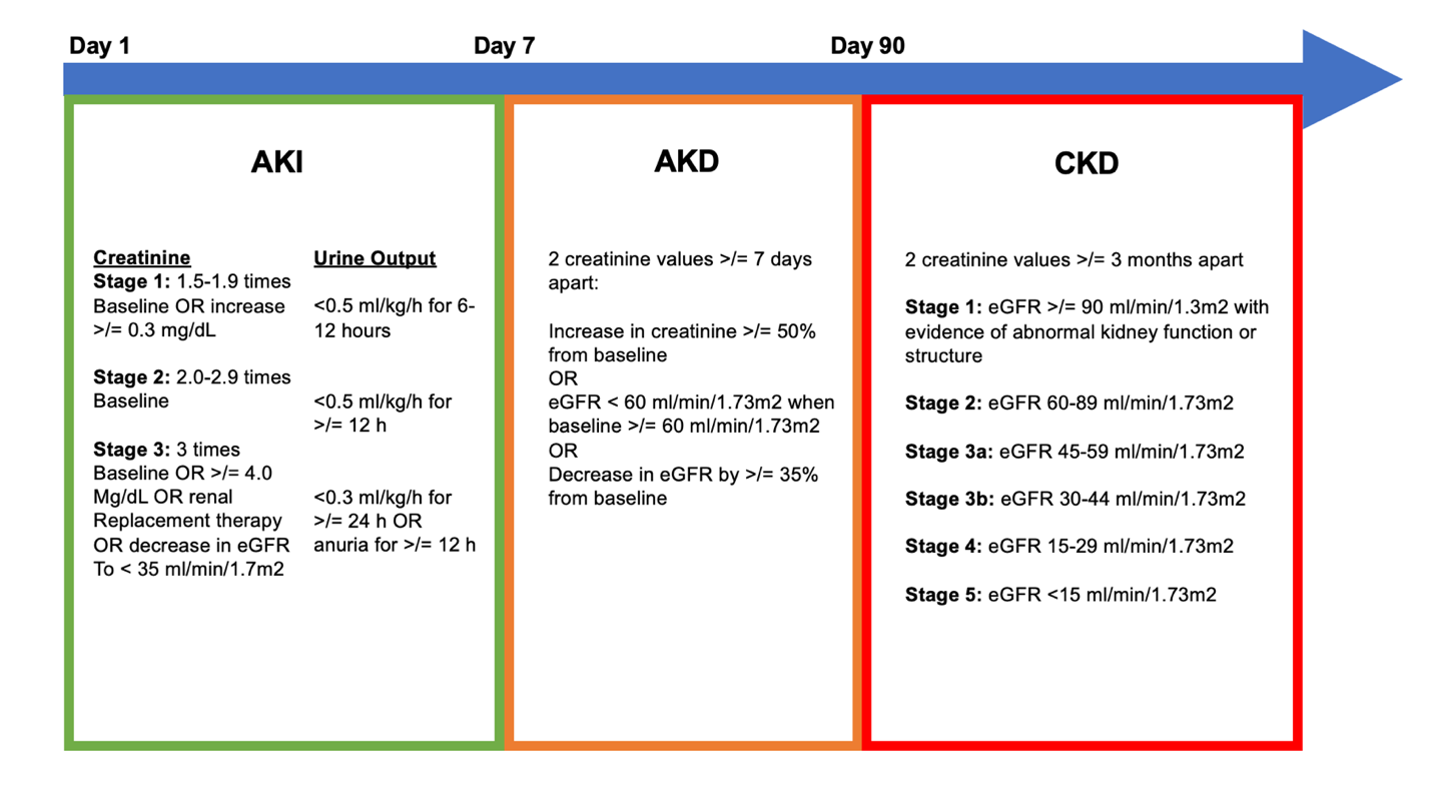Nephrology: CKD
Nephrology 1: AKI
249 - Acute kidney disease increases risk of chronic kidney disease and hypertension in pediatric acute kidney injury survivors
Saturday, April 29, 2023
3:30 PM - 6:00 PM ET
Poster Number: 249
Publication Number: 249.25
Publication Number: 249.25
Mital Patel, Duke University School of Medicine, Durham, NC, United States; Christoph Hornik, Duke University School of Medicine, Durham, NC, United States; Clarissa Diamantidis, Duke University School of Medicine, Durham, NC, United States; David Selewski, Medical University of South Carolina, Mount Pleasant, SC, United States; Rasheed Gbadegesin, Duke University, Durham, NC, United States
- MP
Mital Patel, MD (she/her/hers)
Fellow
Duke University School of Medicine
Durham, North Carolina, United States
Presenting Author(s)
Background: Acute kidney injury (AKI) is common in hospitalized children and increases the risk of chronic kidney disease (CKD) and hypertension. Acute kidney disease (AKD), defined as persistent kidney dysfunction beyond 7 days but less than 90 days (Figure 1), has recently been identified as a risk factor for CKD. Little is known about the patient level risk factors associated with AKI-AKD-CKD progression and no studies have assessed AKD as a risk factor for pediatric hypertension after AKI.
Objective: The aim of this study was to evaluate the risk factors for hypertension and CKD in hospitalized children with AKI.
Design/Methods: This was an observational cohort of all children ≤ 18 yo admitted to a single tertiary care children’s hospital from 2015-2019 with a diagnosis of AKI. CKD was defined as new estimated glomerular filtration rate < 60 ml/min/1.73m2 for >3 months at >90 days after AKI. Hypertension was defined as blood pressure >95th percentile for sex, age, height, diagnosis of hypertension on the problem list, or actively prescribed antihypertensive medication >90 days after AKI. The cohort excluded children who were only treated in the outpatient setting, previous kidney transplant recipients, those who were deceased at < 90 days after AKI, and children who did not have sufficient creatinine values to assess for AKD and CKD development. We used a stepwise selection to build a multivariable logistic regression model to evaluate the odds of CKD and hypertension in children with AKI.
Results: In this cohort, 101/320 (31.6%) children developed CKD and 93/444 (20.9%) developed hypertension. A multivariable logistic regression model identified AKD, congenital heart disease, pre-existing hypertension, and previous AKI as risk factors for CKD after AKI (Table 1). A multivariable logistic regression model identified AKD, stage 3 AKI, congenital heart disease, and solid organ transplantation as risk factors for hypertension >90 days after AKI (Table 2). Children with CKD after AKI were also at higher risk of death in the follow up period (OR 3.46, 95% confidence interval 1.33-9.04, p=0.008).
Conclusion(s): Our study shows that new onset CKD and hypertension are common among hospitalized children with AKI and that AKD is a significant risk factor for both. Patient level risk factors also increased risk of these adverse kidney outcomes.

.png)
.png)
